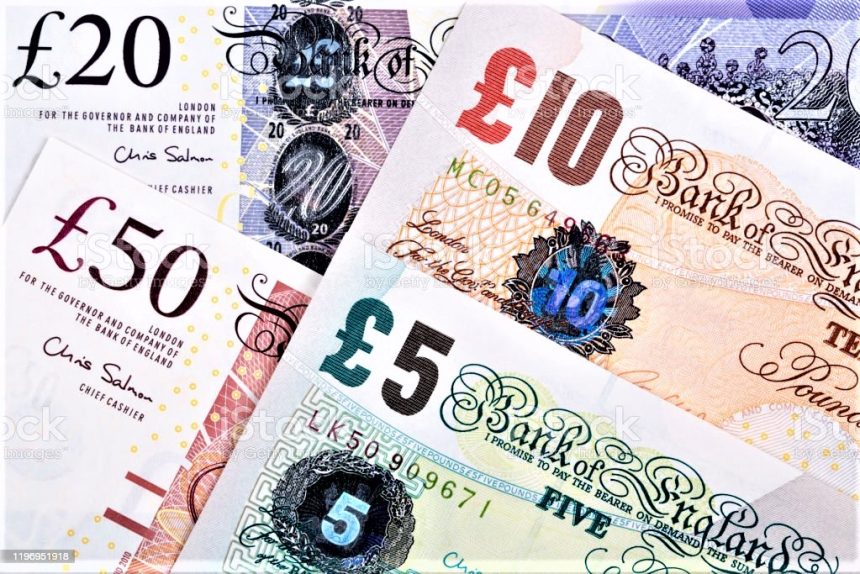Pound (GBP) is treading water against major currencies.
Pound is treading water against major currencies as investors digest mixed signals from the Bank of England (BoE) and weigh the impact of renewed trade tensions stemming from the United States. The cautious stance of the broader BoE Monetary Policy Committee (MPC) contrasts with the more aggressive rate-cutting stance of policymaker Swati Dhingra, who argues that gradual monetary easing may not be sufficient to support economic growth. Meanwhile, the US Dollar (USD) remains volatile as President Donald Trump’s tariff plans on Canada and Mexico rekindle fears of a trade war, adding another layer of uncertainty to global markets.
This complex mix of economic and geopolitical factors is shaping the near-term trajectory of the GBP/USD pair, which continues to hover around 1.2635 as traders await fresh catalysts, particularly key economic data releases from the United States later this week.
BoE’s Policy Dilemma: Gradual Easing vs. Aggressive Cuts
At its most recent policy meeting, the BoE reduced its key borrowing rate by 25 basis points (bps) to 4.5%, signaling a cautious approach toward monetary easing. However, Swati Dhingra, a vocal member of the MPC, has made it clear that she favors a much more aggressive rate-cutting cycle. Speaking at Birkbeck on Monday, Dhingra emphasized that the UK’s consumption-driven economy is struggling with persistent weakness in demand and that monetary policy remains too restrictive.
“I know ‘gradual’ has been interpreted in the media as 25 basis points per quarter, but cutting interest rates at this pace for the remainder of 2025 would still leave monetary policy in an undesirable restrictive position at the end of the year,” Dhingra stated. She further added that “consumption weakness is just not going away,” highlighting the need to ease policy more swiftly.
Dhingra was among the two MPC members—along with Catherine Mann—who voted for a steeper 50 bps cut at the last BoE meeting, in contrast to the majority preference for a more measured approach. This divergence within the committee reflects an ongoing debate about how aggressively the BoE should move to counter economic sluggishness.
Market participants currently anticipate at least two more 25 bps rate cuts from the BoE this year, likely after the March policy meeting. However, if economic conditions deteriorate further, the central bank may face mounting pressure to accelerate the pace of easing.
Trump’s Tariff Plans Add to Global Uncertainty
Beyond the BoE’s internal policy debate, external factors—particularly US trade policy—are also influencing market sentiment. President Trump has reaffirmed his intention to impose 25% tariffs on all imports from Canada and Mexico, a move that has raised concerns about the potential for a broader trade war.
“The tariffs are going forward on time, on schedule,” Trump said during a joint press conference with French President Emmanuel Macron.
This announcement follows a one-month postponement earlier in February, during which Canada and Mexico agreed to stricter border enforcement measures aimed at controlling the flow of fentanyl and undocumented migrants into the US. However, Trump’s decision to proceed with tariffs has reignited fears about supply chain disruptions and inflationary pressures, which could complicate the Federal Reserve’s monetary policy outlook.
How Will the Tariff Decision Affect the Pound Sterling?
The renewed focus on trade protectionism is contributing to increased volatility in currency markets. While the US Dollar initially strengthened in response to Trump’s announcement, it later pulled back slightly as investors reassessed the broader implications of a potential trade conflict. The US Dollar Index (DXY), which measures the Greenback against a basket of major currencies, dipped to around 106.60 after rebounding sharply from a 10-week low.
For the Pound Sterling, the impact of Trump’s tariffs is more indirect but still significant. A full-fledged trade war could dampen global economic activity, reducing demand for UK exports and further pressuring the BoE to act more aggressively to support growth. Moreover, if trade tensions lead to increased risk aversion among investors, the US Dollar could strengthen further as a safe-haven asset, weighing on GBPUSD.
Upcoming US Economic Data: A Crucial Test for the Market
Looking ahead, market participants are keenly watching key US economic data releases this week, which could influence both the Federal Reserve’s policy stance and broader risk sentiment.
US Durable Goods Orders (Thursday): This data will provide insights into business investment trends and overall economic momentum. A strong reading could bolster the US Dollar, while a weaker-than-expected figure might reinforce expectations for Fed rate cuts.
Personal Consumption Expenditures (PCE) Price Index (Friday): As the Fed’s preferred inflation gauge, this report will be crucial in shaping market expectations regarding future interest rate decisions. If inflation remains sticky, the Fed may be less inclined to cut rates aggressively, which could support the US Dollar and exert downward pressure on GBPUSD.
These data points will be closely scrutinized by investors, particularly in light of the BoE’s internal policy debate and the uncertain trade environment.
Market Reaction and Outlook for Pound
As of Tuesday’s European session, the Pound Sterling is stabilizing near 1.2635 against the US Dollar, with price action reflecting cautious market sentiment. While the BoE’s expected rate cuts are generally priced in, any shift toward a more aggressive easing cycle could weaken the GBP further. Conversely, if US economic data signals resilience, the Fed may maintain its higher-for-longer stance, providing additional support to the Greenback.
In the near term, several factors will determine the trajectory of GBP/USD:
1. BoE’s Next Steps: If Dhingra’s call for faster rate cuts gains traction within the MPC, the Pound could come under renewed pressure.
2. US Trade Policy: Any escalation in tariff tensions could drive risk-off flows into the US Dollar, pushing GBP/USD lower.
3. Economic Data Releases: Key US data points this week will be pivotal in shaping Fed policy expectations and overall market sentiment.
Conclusion: A Delicate Balancing Act for the BoE
The Pound Sterling’s direction remains uncertain as the BoE grapples with the challenge of balancing economic support with inflation control. While Swati Dhingra’s calls for more aggressive rate cuts highlight concerns about weak consumption, the broader MPC appears reluctant to accelerate the pace of easing too quickly.
Meanwhile, external factors, including Trump’s tariff plans and upcoming US economic data, are adding to market uncertainty. The interplay between these variables will be critical in determining the GBP/USD outlook in the coming weeks.
For now, traders and investors will be closely monitoring policy signals from the BoE and the Fed, as well as any further developments in US trade policy. With so many moving parts in play, volatility in the currency markets is likely to persist, making it a challenging but potentially lucrative environment for traders navigating these macroeconomic shifts.









